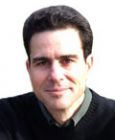
Memory
The Artist and the Great Silent Film Memory Divide
The Artist evokes an old Generation Gap for Baby Boomers.
Posted February 13, 2012
The best picture Oscar nominee, The Artist, works on many levels, but for adults over 50 it holds a special significance. It reminds us of the great divide between our parents' childhoods and our own—between the 1920s and the 1960s. Two decades separated by only 40 years, but to parents who began their childhoods in the silent era and their children who grew up in the 60s, a period synonymous with social tumult and rock-infused screeds, there could be no greater chasm. Between these eras passed the great depression, a world war, an atomic bomb, and the assassination of a president.
On the one side, those black and white films with pale pancaked faces and outrageous mustaches, bulging eyes and the backs of palms placed against swooning foreheads; on the other, Nehru jackets, love beads, sit-ins, and the psychedelic palette induced by LSD. At least, this is how it felt for my 10-year-old self, trying to make sense of all these images circa 1968. I remember asking my parents at one point, ‘Why do all the people in silent films walk in a herky-jerky style?" I remember being so frightened of the sight of Fatty Arbuckle in a clip from a television tribute to silent film comedians that I had a nightmare in which his corpulent heavily mascaraed face framed by its undersized child's beanie hat hovered like a grinning moon inches from my head upon my pillow.
Whether it was because we become fascinated by what terrifies us or I was simply caught up in a general wave of nostalgia for this quaint bygone era, I soon became a silent film nut. Living in a suburb of New York City, my father would take me to Greenwich Village revival houses and we would see Charlie Chaplin, Buster Keaton, the Keystone Kops, early Laurel and Hardy. I had a poster of Harold Lloyd hanging from the iconic clockface in my room; the great stone face of Buster Keaton stared out in stoic endurance from above my bed. And over and over, my parents would tell me about spending the entire day in the darkened movie theater for 5 cents, watching Tom Mix westerns or The Perils of Pauline, interspersed with one reel comedies and longer feature films. I devoured book after book about this time—the oversized coffee table books with pictures of the "great screen immortals" (I realized quickly that if they were referred to as "immortals," they were surely long dead—Rudolph Valentino, John Gilbert, Theda Bara, Charley Chase). It seemed impossible to me that Charlie Chaplin or Greta Garbo were actually still alive — how could they survive in atmospheres so radically different from their own - like trying to breathe on a different planet from the earth. I remember being near tears when Chaplin returned in 1972 to receive an honorary Oscar, after years of blacklisted exile.
Watching The Artist reminded me, and it would seem the packed house of white-haired and middle-aged people surrounding me in my local multiplex as well, of this ephemeral Brigadoon that vanished with the advent of "talking pictures." Whatever ensued in our parents' lives, the horrible and wrenching challenges that they faced, which fired them into becoming the "greatest generation," their childhoods commenced in a radically different world—one still looking back to a Victorian morality and a small town sensibility. If my view of the world beyond my immediate home began with the blue glow of the television, theirs was shaped by those black and white shades and the accompaniment of piano or organ to the staccato movement on the screen. As the failed silent film star, George Valentin sat drinking alone, facing his own obsolescence, while the flapper, Peppy Miller heralded the new era of sound, I felt again the power of the great memory divide between my parents' world and my own. As much I had grown to love their movies, as much as I had asked to hear of their early memories of those days, I understood, just as Valentin deep in his Scotch had known, that the world had been irrevocably changed—the real 20th century had begun, in all its escalating speed and savagery, and we would never know that peculiar and strangely noble silence again.

